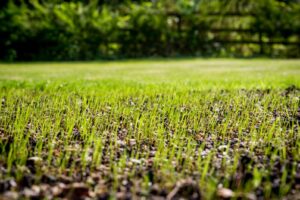
Terpenes stand at the forefront of the complex chemistry that defines cannabis strains, each with a distinct aromatic identity. These organic compounds, abundant in nature, are particularly notable in cannabis, where they serve as the architects of scent and flavor. They go beyond mere fragrance, however; terpenes significantly influence the therapeutic and psychoactive dynamics of cannabis. The intricate relationship between terpenes and cannabinoids molds the individual character of every strain, guiding the experiences they are poised to deliver. Among these terpenes, myrcene terpene emerges as a noteworthy constituent, often dominating the terpene profile with its earthy and musky notes, and is sought after for its purported relaxing effects.
The Essence of Aroma
Terpenes define the aromatic essence of cannabis. They are responsible for the vast array of scents ranging from sweet floral notes to sharp, spicy undertones. When these compounds are inhaled or ingested, they interact with olfactory receptors, setting the stage for the anticipated psychoactive experience. The aromatic profile of a cannabis strain can evoke memories, emotions, and even physical reactions, which underscores the significance of terpenes in user preference and strain selection.
Terpenes and The Entourage Effect
The concept of the entourage effect is rooted in the idea that terpenes and cannabinoids create a synergy that impacts the body’s endocannabinoid system more effectively than any single compound alone. Terpenes may alter the blood-brain barrier’s permeability, facilitating a more efficient passage of cannabinoids and thus modifying their effects. This interplay could explain why two strains with identical THC content can produce distinct experiences.
The Prominent Player
Myrcene is renowned for being one of the most abundant terpenes in cannabis, often comprising more than half of the total terpene profile in some strains. It is associated with sedative qualities and is believed to play a significant role in the intensification of THC’s psychoactive effects. Strains high in myrcene might be sought after for their relaxing properties, making them popular choices for evening use.
Varieties and Their Volatile Profiles
Each cannabis strain exhibits a terpene composition as distinct as a fingerprint. This chemical signature determines not only the aroma and flavor but also potential effects on mood and consciousness. For example, strains rich in linalool, which has a floral scent, are often associated with calming properties, whereas those high in caryophyllene, with its peppery bouquet, might offer more warming and comforting effects.
Cultivation:
The art of cultivating cannabis extends to optimizing terpene production. Growers manipulate factors such as light exposure, soil pH, and nutrients to create an environment conducive to terpene synthesis. This meticulous cultivation is a testament to the importance placed on terpenes, as the resulting enhanced profiles cater to the connoisseur’s palate and the patient’s therapeutic needs alike.
Innovation in Extraction
As terpenes gain more recognition, extraction techniques have become more sophisticated, focusing on preserving these volatile compounds. Methods like CO2 extraction and cold-pressing are employed to capture the essence of the terpene profiles without the use of solvents that can alter their purity and potency. The result is a range of products, from oils to concentrates, that deliver a more robust and authentic experience.
Therapeutic Potential and Research
Beyond their sensory appeal, terpenes are being scrutinized for their potential health benefits. Some studies suggest that terpenes like pinene have cognitive-enhancing properties, while others like limonene may have mood-elevating effects. As research continues, the medicinal value of terpenes is becoming more apparent, paving the way for new therapeutic applications that extend far beyond traditional uses.
Enhancement of Absorption and Efficacy
Terpenes, particularly those like myrcene, are believed to increase the permeability of cell membranes and increase the rate at which substances cross the blood-brain barrier. This characteristic suggests that terpenes might play a crucial role in how effectively cannabinoids are absorbed into the system. In strains high in myrcene, for instance, the onset of effects may be quicker and more pronounced, potentially increasing the efficacy of the cannabis strain in both recreational and medicinal contexts. The exploration into this aspect of terpene action is leading to a better understanding of how these compounds can be used to tailor cannabis products for specific needs and individual biochemistries.
Influence on Cannabis Strain Classification
Traditionally, cannabis strains have been classified as Indica, Sativa, or Hybrid based on their physical attributes and the nature of the effects they produce. However, as knowledge about terpenes such as myrcene expands, there’s a growing argument among experts for a classification system based more on a strain’s terpene profile. This shift in classification acknowledges the role of terpenes in dictating the nuances of the user’s experience. By focusing on terpene profiles, consumers and medical professionals could make more informed decisions that go beyond the broad categories traditionally used, choosing strains that align more closely with desired aromas, flavors, and effects.
Conclusion
Concluding, the profound influence of terpenes on the cannabis plant’s sensory and physiological effects cannot be overstated. These compounds are not just the bearers of fragrance; they are active participants in the cannabis experience, shaping the nuances that differentiate one strain from another. As research unfolds, the therapeutic prospects of terpenes, including the myrcene terpene, become clearer, highlighting their potential in wellness and medicine. The role of terpenes in cannabis is a dance of chemistry and sensation, where each molecule performs in concert to create the symphony that is the cannabis plant’s signature. The quest to understand and harness the full capabilities of these compounds is ongoing, promising a future where the subtleties of terpenes like myrcene are as well-known as the strains they define.






